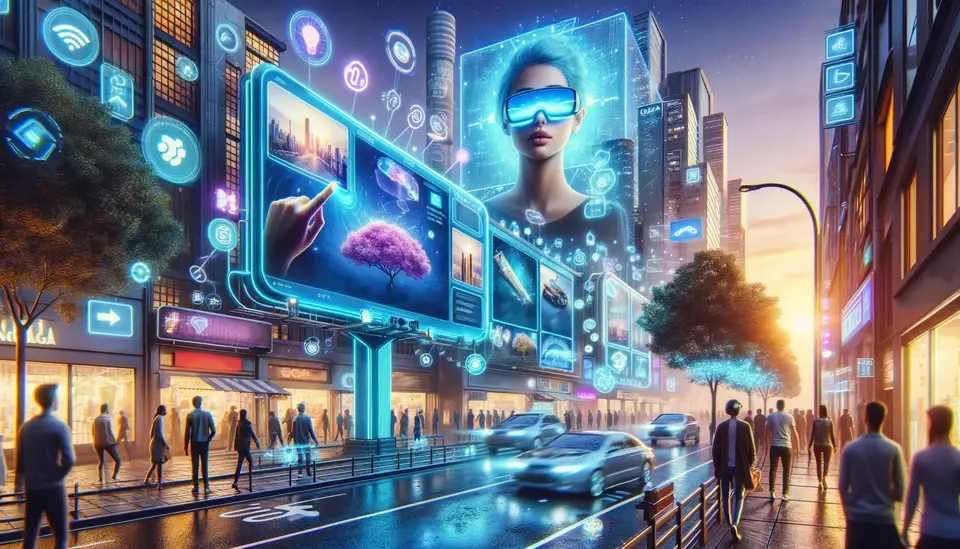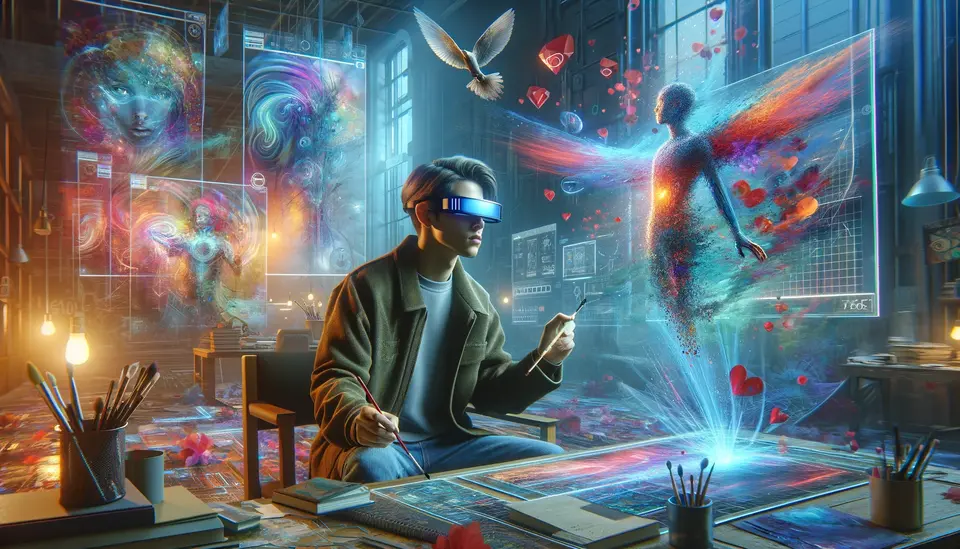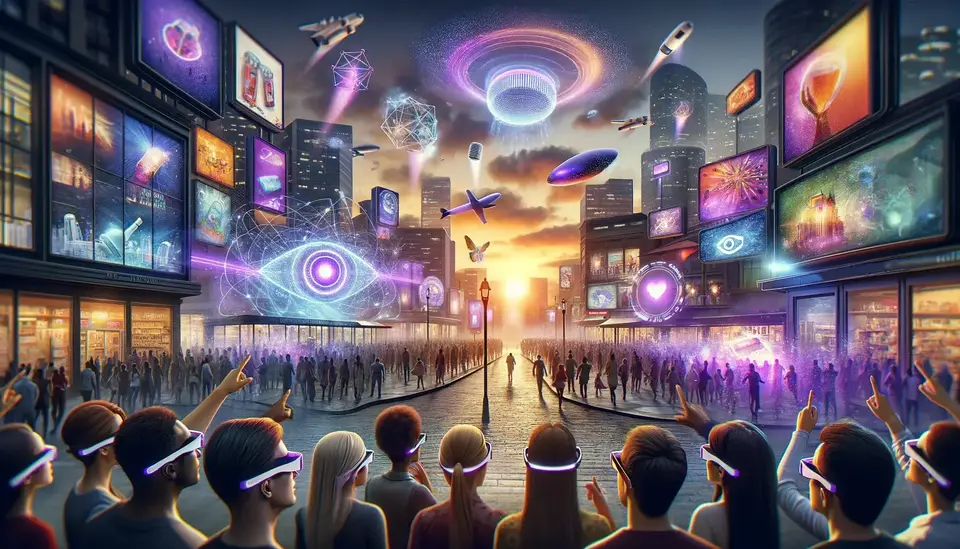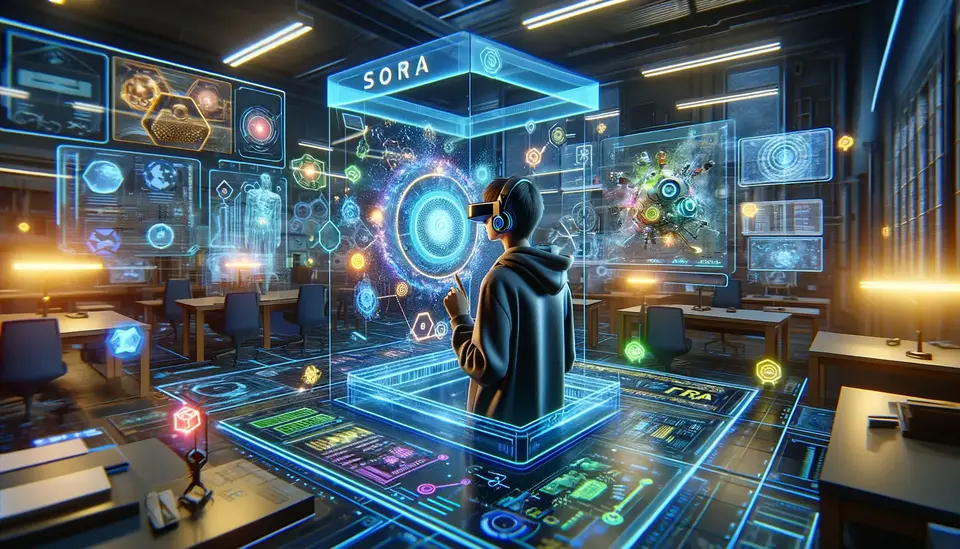Advantages of Augmented Reality (AR)
Posted on September 29, 2023 26 minutes 5452 words
Table of contents
Introduction
In recent years, the technological landscape has witnessed a paradigm shift, reshaping how we interact with the world and each other. One such technological marvel steering this shift is Augmented Reality (AR), a burgeoning technology that blurs the line between the physical and the digital realm. Its journey, from being a figment of science fiction to a tangible tool enhancing myriad aspects of daily life, is nothing short of a technological renaissance. As we venture deeper into this topic, let’s first immerse ourselves in the fascinating evolution of augmented reality and then delve into the diverse domains it has remarkably influenced.
1. Brief Background on the Rise of Augmented Reality Technology
The concept of augmented reality is not as new as it might seem; it has been simmering in the corridors of innovation for several decades. Its roots can be traced back to the 1960s, with the development of the first head-mounted display system by computer scientist Ivan Sutherland. It was a rudimentary form, limited by the technology of its time, but it sowed the seeds for what was to come.
Throughout the subsequent decades, AR remained largely in the experimental phase, popping up in research labs and high-tech demonstrations. It was not until the advent of powerful smartphones and mobile computing in the late 2000s that AR began to blossom into the transformative technology we recognize today. The availability of smartphones equipped with advanced sensors and cameras facilitated the fusion of digital elements with the real world, directly on the screens of handheld devices.
AR catapulted into the mainstream with the launch of AR-based mobile applications and games that allowed users to interact with digital objects superimposed onto the physical world. Games like Pokémon Go became a global phenomenon, demonstrating the mass appeal and potential of augmented reality. Since then, AR has been on an upward trajectory, continually evolving, fueled by advancements in Artificial Intelligence, machine learning, and computer vision. These developments have made AR more immersive, responsive, and adaptable, paving the way for a plethora of applications that extend far beyond gaming.
2. Mention of Various Fields Where AR Has Made a Significant Impact
Augmented reality has metamorphosed from a novel attraction to a potent tool capable of revolutionizing diverse sectors. Its integration is now evident in a myriad of fields, each leveraging AR’s capabilities to enhance user experiences and streamline processes.
-
Education & Training: AR has emerged as a powerful tool in education, enabling interactive learning experiences through the visualization of complex concepts and providing immersive training simulations for professionals in various fields.
-
Healthcare: In healthcare, AR assists medical practitioners by offering augmented visuals for intricate surgeries and aiding in patient education by visualizing medical conditions and treatment plans.
-
Retail & E-commerce: The retail sector has embraced AR for providing virtual try-ons, enabling customers to visualize products in their environment before making a purchase, thus revolutionizing the shopping experience.
-
Real Estate: In real estate, AR offers virtual property tours, allowing prospective buyers to explore properties from the comfort of their homes, complete with immersive, 360-degree views and interactive information points.
-
Manufacturing: The manufacturing sector employs AR for maintenance and repair tasks, offering technicians augmented visuals and information overlays to streamline operations and reduce errors.
-
Marketing & Advertising: AR has transformed marketing strategies by enabling interactive and engaging advertising campaigns, offering consumers an immersive brand experience, and fostering deeper connections.
-
Tourism & Navigation: The tourism sector leverages AR for offering augmented tourist guides, providing travelers with interactive information about points of interest, enhancing the exploration experience.
In each of these fields, AR has not only enhanced the user experience but has also introduced innovative solutions to longstanding challenges, signifying a transformative phase in the way technology interfaces with various industries. As we delve further, we will explore in detail the extensive advantages AR brings to these domains, illustrating how it is shaping a future where digital and physical realities coalesce in harmony.
As we delve deeper into this exploration, we will unearth the multifaceted advantages that AR holds, promising a future where technology and reality coalesce in a harmonious and enriching symphony.
Section 1: Enhanced Learning and Education
In the evolving landscape of education, Augmented Reality (AR) stands as a beacon of innovation, ushering in a new era of learning that transcends traditional boundaries. Its immersive nature and interactive capabilities offer an enriched learning experience, making education more engaging and accessible. As we explore this section, we delve deep into the facets of interactive learning, skills training, and personalized learning - each profoundly impacted and reshaped by AR technology.
1. Interactive Learning
3D Models in Classrooms
The introduction of 3D models in classrooms, facilitated by AR, marks a significant shift from passive learning to an interactive educational experience. With AR, educators can bring complex subjects to life, allowing students to explore and manipulate three-dimensional representations of objects and concepts right before their eyes. This visual and tactile mode of learning not only fosters a deeper understanding but also encourages curiosity and engagement.
For instance, a biology class discussing the human anatomy can be transformed into a dynamic session where students can explore individual organs, their structures, and functions through 3D models. Similarly, historical lessons can be enriched with detailed 3D representations of historical artifacts, geographical locations, or architectural marvels, providing a vivid window into the past. By fostering an environment where students can interact with the subject matter in a tangible way, AR nurtures a more profound and lasting understanding, bridging gaps between theory and reality.

Virtual Field Trips
AR technology has made it possible to transcend the physical confines of the classroom through virtual field trips. These immersive experiences allow students to explore distant locations, historic sites, or even different time periods from the comfort of their classroom. Virtual field trips are not just about viewing distant places; they offer interactive experiences where students can engage with the environment, gather information, and gain a holistic understanding.
For instance, a geography class can take a virtual trip to the Amazon rainforest, exploring its diverse ecosystem and wildlife through augmented reality. Similarly, students studying astronomy can embark on a virtual journey through the solar system, witnessing the planets and their moons in detailed, three-dimensional visuals. These virtual excursions not only spark interest and enthusiasm but also provide a contextual backdrop for the theoretical knowledge acquired in classrooms, offering a rich, multi-sensory learning experience.
2. Skills Training
Medical Training
The integration of AR in medical training has brought about a revolutionary change in how medical professionals are educated. AR facilitates immersive training simulations where medical students can practice surgeries and other procedures in a risk-free, virtual environment. This technology allows for the visualization of complex medical conditions and provides a detailed insight into the human body’s workings, offering an unparalleled depth of knowledge and understanding.
For instance, AR can assist in surgical training by overlaying critical data and 3D visuals onto the patient’s body, providing real-time guidance and information during the procedure. This not only enhances precision but also serves as an invaluable learning tool, helping budding medical professionals hone their skills and gain confidence before stepping into the actual operating room.
Military Training
In the military sector, AR serves as a potent tool for training personnel in various combat and non-combat scenarios. AR-powered simulations provide soldiers with realistic training environments where they can practice tactics, strategies, and responses to different situations without any real-world risks. These simulations can mimic complex battleground scenarios, offering a dynamic training platform that adapts to individual learning curves and performance levels.
Furthermore, AR can assist in equipment training, where military personnel can learn about the intricate details and functionalities of various weaponry and machinery through interactive 3D models. By providing a comprehensive, immersive, and flexible training environment, AR is playing a pivotal role in shaping the future military forces, well-prepared and adept to face modern challenges.
3. Personalized Learning
Tailored Educational Content
AR brings a new dimension to personalized learning by offering tailored educational content that adapts to individual learning styles and paces. Through AR, educators can create customized learning pathways that cater to the unique needs and strengths of each student. This could range from interactive assignments and projects to augmented feedback and assessment systems that monitor progress and adjust content accordingly.
For instance, a student struggling with a particular topic can receive augmented assistance in the form of interactive tutorials and demonstrations that break down complex concepts into digestible segments. This tailored approach not only fosters a supportive learning environment but also encourages students to take ownership of their learning journey, nurturing a more inclusive and adaptive educational framework.
Learning at One’s Own Pace
AR empowers learners to control their learning pace, providing an avenue for self-paced learning where students can explore subjects at their comfort and speed. Through AR applications, learners can access a wealth of educational resources, tutorials, and interactive exercises that allow them to delve deep into topics of interest without feeling rushed or pressured by a traditional classroom timetable.
Furthermore, AR offers opportunities for revisiting and revising content, where students can go back to specific modules or topics and engage with them multiple times until they attain mastery. This flexibility fosters a learning environment where students are motivated to explore and learn, nurturing a lifelong passion for education and personal growth.
In conclusion, the integration of Augmented Reality in the educational sector signifies a transformative shift, paving the way for a more interactive, immersive, and personalized learning experience. Through interactive learning sessions, skillful training modules, and tailored educational content, AR promises a future where learning is not confined to books but is a vivid, engaging, and enriching journey, fostering intellectual growth and curiosity at every step.
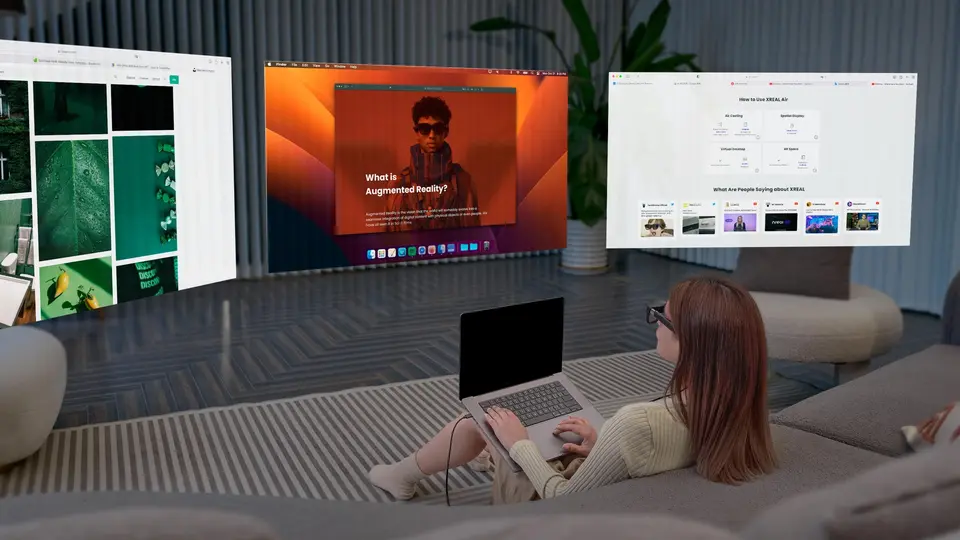
Section 2: Business and Marketing
As the digital revolution propels forward, the business and marketing sectors are witnessing a monumental shift, driven significantly by the integration of Augmented Reality (AR) technology. This technology, melding the real and virtual worlds seamlessly, is reshaping how businesses connect with their consumers, streamline operations, and market their products. In this section, we will explore the multifaceted role AR plays in enhancing product visualization, improving business operations, and revolutionizing marketing and advertising strategies, offering a closer look at how this technology is shaping a new frontier in the business world.
1. Product Visualization
Try Before You Buy (Furniture, Clothes)
In the realm of retail, AR technology has reshaped the customer’s shopping journey by introducing ‘Try Before You Buy’ features. Now, consumers can virtually try on clothes or visualize how furniture would look in their space, all through the lens of their smartphones or AR glasses.
For clothing retailers, AR allows users to select different styles, colors, and fits, virtually trying them on to gauge their look and feel. This not only adds a layer of convenience but also significantly reduces the likelihood of returns, as customers have a better sense of what they are purchasing.
In the furniture sector, customers can virtually place different pieces of furniture in their homes, experimenting with placement, style, and color options. This visualization helps in making informed decisions, enhancing customer satisfaction and contributing to a seamless shopping experience.
Virtual Property Tours
In the real estate industry, AR has given rise to virtual property tours, revolutionizing the way properties are marketed and viewed. These virtual tours offer potential buyers or renters a 360-degree view of properties, allowing them to explore every nook and cranny from the comfort of their homes. Moreover, AR can overlay additional information onto these tours, providing details about the local area, amenities, or potential customization options within the property.
These virtual tours not only save time and resources but also widen the audience reach, as properties can be viewed from anywhere in the world, breaking geographical boundaries and attracting a broader pool of potential clients. This innovative approach to property viewing has proven to be a game-changer, offering an immersive and interactive experience that goes beyond static images or video tours.
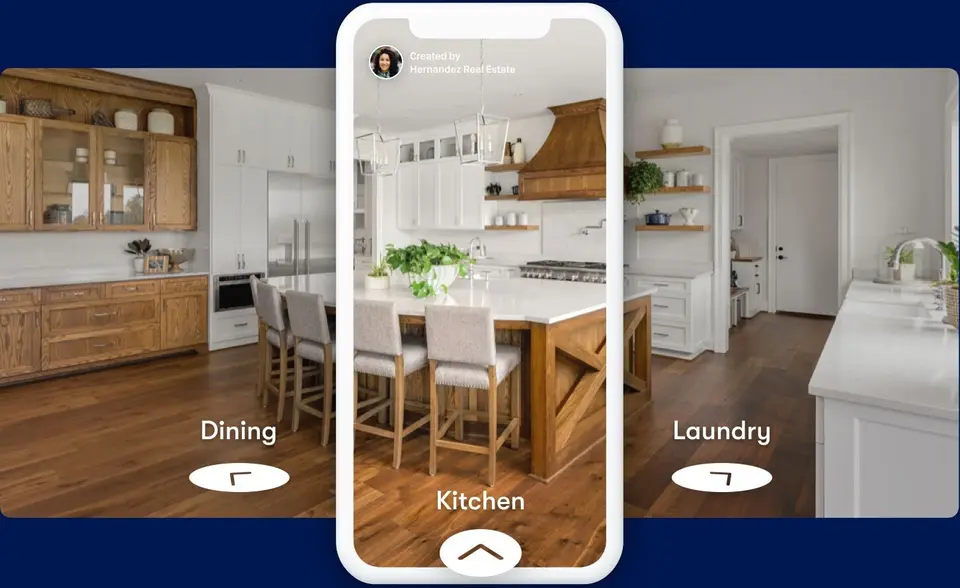
2. Improving Business Operations
Assisted Maintenance and Repairs
AR technology serves as a powerful tool in enhancing business operations, particularly in the field of maintenance and repairs. Technicians and maintenance personnel can now leverage AR to receive real-time assistance and guidance during repair tasks. Through AR glasses or smartphones, they can access detailed visual instructions overlaid onto the physical equipment, guiding them step-by-step through complex repair procedures.
Furthermore, AR allows for remote assistance, where experts from anywhere in the world can assist on-site technicians by providing insights and guidance through augmented reality interfaces. This not only accelerates the repair process but also ensures accuracy and efficiency, reducing downtime and saving costs.
Enhanced Data Visualization
In the corporate sphere, AR aids in the visualization of complex data sets, facilitating more informed decision-making processes. Through AR, businesses can create interactive data dashboards, where information is displayed in a more intuitive and visual format. Managers and executives can interact with these data representations, manipulating them in real-time to glean insights and identify patterns.
This enhanced data visualization not only streamlines the analysis process but also fosters a deeper understanding of business metrics, facilitating strategic planning and informed decision-making. By offering a dynamic platform for data interaction, AR enables businesses to navigate the complexities of the modern business landscape with agility and precision.
3. Marketing and Advertising
Interactive Ad Campaigns
AR has ushered in a new era of marketing and advertising, characterized by interactive and immersive ad campaigns. Businesses can now create augmented reality advertisements that engage customers in a more profound and meaningful manner. For instance, AR ads can allow users to interact with products virtually, explore their features, and even visualize them in a real-world context.
These interactive campaigns foster a deeper connection between the brand and the consumer, creating memorable experiences that resonate on a personal level. Moreover, AR offers opportunities for viral marketing, as users are more likely to share innovative and interactive ads with their social networks, amplifying the reach and impact of the campaign.
Engaging Customer Experiences
Beyond advertising, AR technology plays a pivotal role in creating engaging customer experiences across various touchpoints. In stores, AR can enhance the shopping experience by offering personalized recommendations, product information, and virtual try-ons, all accessible through the customer’s smartphone. Online, businesses can leverage AR to create interactive websites and apps, offering customers a dynamic platform to explore products and services in a more immersive manner.
Furthermore, AR allows for the creation of virtual brand experiences, where customers can engage with the brand in unique and innovative ways, such as virtual showrooms, augmented reality events, and interactive brand stories. These engaging experiences foster customer loyalty and brand affinity, positioning the business as a leader in innovation and customer-centricity.
In conclusion, AR stands as a transformative force in the business and marketing sectors, offering novel ways to visualize products, streamline operations, and engage with customers. By leveraging the capabilities of augmented reality, businesses can carve a niche in the competitive market landscape, offering differentiated and value-added experiences that resonate with the modern consumer. As we move forward, it is evident that AR will continue to shape the trajectory of the business world, fostering innovation and driving growth in the digital age.
Section 3: Entertainment and Gaming
The entertainment and gaming industry has always been at the forefront of embracing technological advancements to enhance the user experience. Augmented Reality (AR) has emerged as a groundbreaking technology, defining a new paradigm in how we perceive and interact with the virtual and real worlds simultaneously. In this section, we will delve deep into the remarkable transformations that AR has ushered in the spheres of gaming and multimedia entertainment, paving the way for a future where reality and virtuality intertwine in harmony.
1. Immersive Gaming
Interactive Game Environments
AR takes gaming to unprecedented heights by facilitating interactive game environments that transcend the traditional screen barriers. Gamers are no longer restricted to the confines of their monitors or TV screens; instead, the whole world becomes a potential playground. AR superimposes virtual elements onto the real world, creating a dynamic game environment that can be manipulated and explored in real-time.
Through AR, game developers can craft rich and complex game universes that are embedded within the real world. Players can interact with virtual objects, solve puzzles, and undertake missions that blend seamlessly with their physical surroundings. This level of interaction fosters a more engaging and immersive gaming experience, where players are drawn into the game world, experiencing a rich narrative that unfolds in a tangible and realistic setting.
Furthermore, this technology allows for new genres of games that blur the lines between reality and fiction. For instance, treasure hunt games where players explore real locations to find virtual treasures, or mystery games where players have to solve crimes in a virtual city mapped onto their real surroundings.
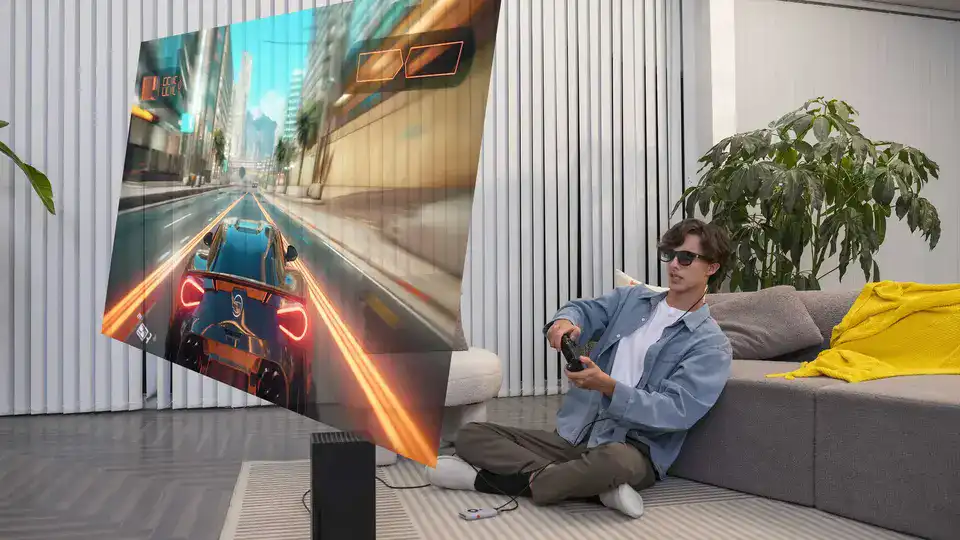
Engaging Multiplayer Experiences
AR also revolutionizes multiplayer gaming, offering a platform where players can connect and interact in novel ways. Multiplayer games utilizing AR technology can foster social interactions and collaborations, as players converge in physical locations to engage in virtual battles, undertake missions, or compete in challenges.
Through AR, multiplayer experiences are not confined to virtual avatars on a screen but extend to real-world interactions and collaborations. Players can see and interact with each other’s augmented reality avatars, fostering a community where gamers can communicate, strategize, and compete in a shared virtual space that coexists with the real world.
This unique blend of virtual and physical interaction creates a more enriched and engaging multiplayer experience, where friendships are forged, and communities are built. It also opens avenues for events like AR gaming tournaments, where players from around the world can converge in real locations for massive, augmented reality gaming experiences.
2. Enhanced Movie and TV Experiences
Augmented Reality in Filmmaking
Augmented Reality is carving a niche in the realm of filmmaking, offering innovative tools and techniques for creators to enhance their storytelling prowess. Filmmakers can leverage AR to visualize sets, plan shots, and even create special effects in real-time. This technology allows for a seamless integration of virtual elements into live-action scenes, creating a harmonious blend of reality and fiction that elevates the cinematic experience.
Moreover, AR provides filmmakers with a canvas where they can experiment with new narrative forms and storytelling techniques. Interactive films, where audiences can engage with the story through augmented reality elements, are becoming a possibility. Viewers could potentially influence the story’s progression or explore additional narrative layers through AR interfaces, fostering a more engaging and participatory viewing experience.
Furthermore, AR can enhance post-production processes, offering tools for real-time editing and effects creation, streamlining the filmmaking process and opening avenues for more creative and innovative cinema.
Interactive TV Shows
The realm of television is also witnessing a transformative shift with the integration of AR technology. Television producers are experimenting with interactive TV shows that incorporate augmented reality elements to engage viewers in unprecedented ways. These shows can offer AR-enabled content that viewers can access through their smartphones or AR glasses, providing additional information, interactive features, or immersive experiences that complement the televised content.
For instance, during a nature documentary, viewers could use AR to explore the habitats being showcased in more detail, interacting with virtual representations of the flora and fauna. In quiz shows, viewers could participate in real-time through AR interfaces, answering questions and competing with other viewers for prizes.
Moreover, AR can foster a more interactive relationship between TV shows and their audiences, with features like augmented reality fan engagement platforms where viewers can interact with characters, explore storylines, and even contribute content through AR interfaces.
In conclusion, Augmented Reality is redefining the landscapes of gaming and entertainment, offering immersive and interactive experiences that revolutionize how we engage with content. From dynamic gaming environments to participatory cinema and interactive television, AR stands as a beacon of innovation, heralding a future where entertainment is not merely consumed but experienced in a rich, multi-sensory, and participatory manner. As we forge ahead, it is evident that AR will continue to shape the entertainment industry, offering new vistas of creativity and engagement that resonate with the digital age’s dynamic ethos.
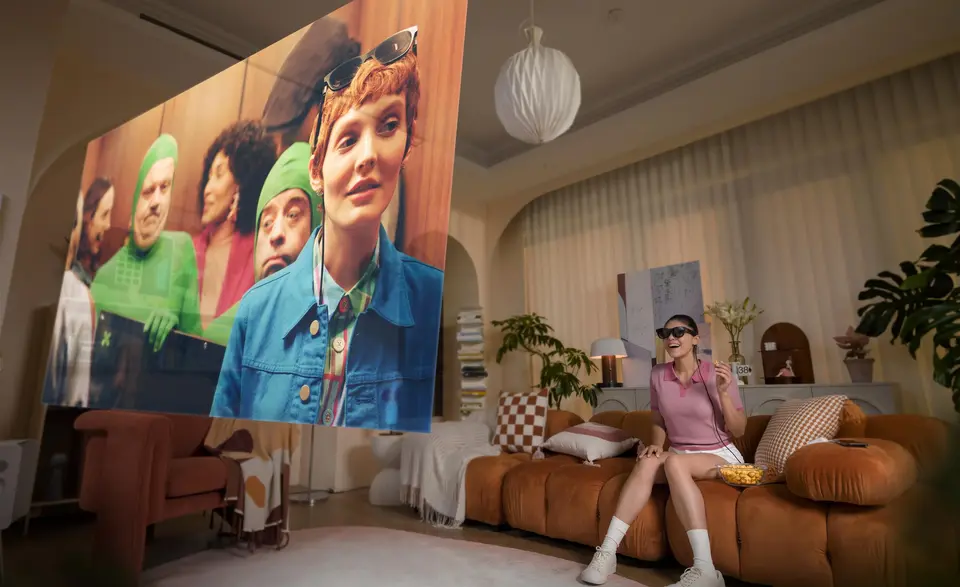
Section 4: Health and Wellness
In the contemporary era, the realm of health and wellness is undergoing a seismic shift, driven by the integration of technology into numerous aspects of healthcare and personal well-being. Augmented Reality (AR) stands prominently in this transformation, offering groundbreaking approaches in medical training, surgery, fitness, and wellness programs. This section meticulously unravels the impact of AR in the health and wellness sector, highlighting how it has revolutionized medical training and created a new frontier in fitness and wellness management.
1. Medical Training and Surgery
Augmented Reality in Medical Imaging
In the medical field, augmented reality has emerged as a powerful tool, significantly enhancing the efficacy of medical imaging. AR enables healthcare professionals to visualize complex medical data in a three-dimensional format, making the interpretation of images more intuitive and accurate. For instance, radiologists can use AR to overlay diagnostic images onto a patient’s body, providing a more comprehensive view of internal structures and potentially aiding in more precise diagnoses.
Furthermore, AR facilitates interactive learning experiences for medical students. Through augmented reality interfaces, students can explore detailed 3D models of the human body, delve deep into the intricacies of human anatomy, and understand complex physiological processes in a more tangible and immersive manner. This hands-on approach to learning can foster a deeper understanding of medical science, paving the way for a new generation of healthcare professionals equipped with advanced skills and knowledge.

Real-time Guidance in Surgeries
The operating room is another domain where AR is making significant strides, providing surgeons with real-time guidance during complex procedures. AR can overlay critical data directly onto the surgeon’s field of view, offering information such as vital signs, surgical plans, or even a 3D model of the anatomy on which they are operating. This not only enhances the surgeon’s situational awareness but also aids in more precise and safe interventions.
Moreover, AR can facilitate remote assistance in surgeries. Experienced surgeons from around the world can guide less experienced colleagues through complex procedures in real-time, offering their expertise and guidance through AR interfaces. This collaborative approach can potentially enhance the quality of surgical care, reducing errors and improving patient outcomes.
2. Fitness and Wellness
Interactive Workout Sessions
In the fitness domain, AR technology is reshaping how individuals approach their workout routines. AR facilitates interactive workout sessions, where users can engage with virtual personal trainers in the comfort of their homes. These virtual trainers can guide users through a series of exercises, providing real-time feedback on their form and performance.
Furthermore, AR can transform mundane workout routines into engaging experiences. For instance, users can partake in AR-enabled fitness games that combine physical exercise with immersive gaming elements. This not only makes the workouts more enjoyable but also encourages users to stick to their fitness regimes, fostering a healthy and active lifestyle.
Wellness Apps with AR Features
The wellness industry is also leveraging AR technology to offer a range of innovative solutions that enhance personal well-being. Wellness apps equipped with AR features can offer users personalized advice and insights into their health and wellness journeys. For example, nutrition apps can use AR to provide real-time information on the nutritional content of food items, helping users make informed choices regarding their diets.
Furthermore, AR can facilitate mindfulness and relaxation practices. Through AR-enabled wellness apps, users can create immersive environments for meditation and relaxation, customizing their surroundings with soothing visual and auditory elements that foster a serene and tranquil ambiance.
Moreover, AR can aid in mental health therapies, providing interactive platforms for therapeutic interventions. Through augmented reality, therapists can create simulated environments that aid in the treatment of various psychological conditions, offering innovative approaches to mental health management.
In conclusion, the health and wellness sector stands at the cusp of a new era, characterized by the innovative integration of augmented reality technology. From enhancing medical training and surgical interventions to fostering interactive fitness regimes and personalized wellness experiences, AR is poised to revolutionize healthcare and personal well-being. As we navigate the complexities of the modern world, it is clear that AR will play a pivotal role in shaping the future of health and wellness, offering solutions that are grounded in innovation, precision, and personalization.
Section 5: Everyday Convenience
In an age where efficiency and convenience are highly sought after, augmented reality (AR) steps in as a monumental ally, seamlessly integrating into the fabric of daily life. From revolutionizing navigation to transforming shopping experiences, AR has proven itself to be more than just a technological marvel—it’s a tool that facilitates ease and convenience in everyday routines. In this section, we explore the avenues where AR markedly influences and enhances daily living, making strides in aspects ranging from navigation to shopping.
1. Navigation and Maps
Augmented Reality Directions
Navigating through bustling streets and unfamiliar territories becomes a delightful experience with the assistance of AR. By simply pointing your smartphone or wearing AR glasses, you can now have access to visual, augmented reality directions superimposed onto the real world. This goes beyond the conventional map and GPS system, as AR adds a visual layer of information, making it easier to follow directions without the need to constantly refer to a screen.
For instance, while walking, arrows and directions can be displayed on the pavement in real time, guiding you to your destination with ease. This not only makes the navigation process more intuitive but also significantly reduces the chances of getting lost. Moreover, this technology can be integrated into vehicle windshields, providing drivers with a heads-up display that offers real-time directions and traffic updates, enhancing safety and convenience on the roads.
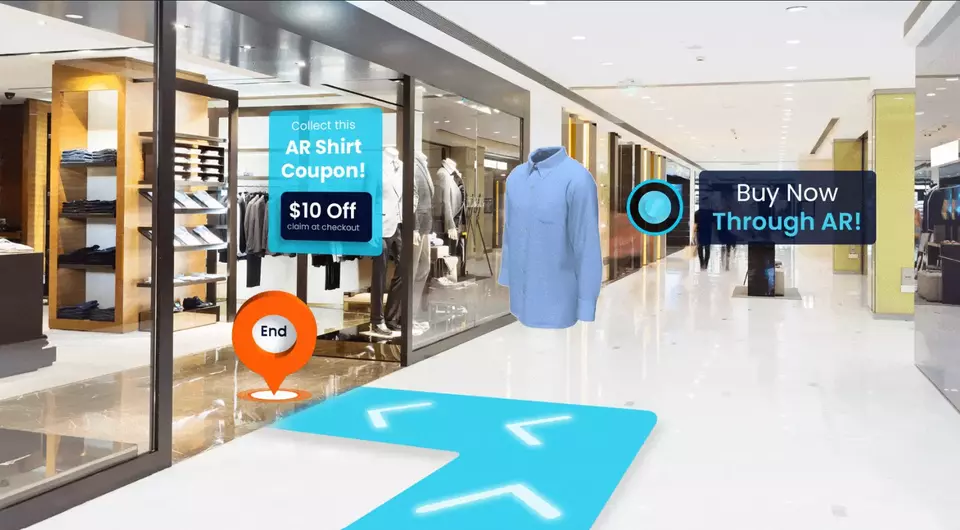
Points of Interest Highlighted in Real-time
Discovering new places and points of interest becomes an interactive experience with AR. As you explore a locale, AR can highlight points of interest in real time, providing you with instant information about restaurants, shops, historic landmarks, and more. This feature can immensely enhance tourism experiences, as travelers can receive rich, contextual information about the places they are visiting directly onto their AR devices.
Furthermore, it enables individuals to connect more deeply with their surroundings, offering insights and stories behind local landmarks and cultural sites, thereby fostering a more enriching and informed exploration experience. It also proves to be a valuable tool for locals to rediscover their own cities, finding hidden gems and learning more about the places they visit daily.
2. Shopping
Virtual Fitting Rooms
The retail industry is undergoing a transformative shift with the incorporation of AR technology, offering consumers the convenience of virtual fitting rooms. Through AR, shoppers can try on clothes, accessories, and makeup virtually, without stepping out of their homes. This technology accurately simulates how different products would look on the individual, providing an opportunity to explore various options and make informed decisions before making a purchase.
Not only does this streamline the shopping process, but it also minimizes the need for returns and exchanges, as customers have a clearer idea of how products will look on them. Retailers can enhance the customer experience further by offering personalized suggestions and styling advice based on the virtual try-ons, fostering a shopping experience that is both convenient and personalized.
Augmented Reality Catalogs
Augmented reality catalogs are revolutionizing the way consumers interact with products before making a purchase. These interactive catalogs allow users to visualize products in their real environment before buying them. For instance, individuals looking to buy furniture can use AR catalogs to place virtual models of furniture pieces in their own homes, assessing whether the item complements their existing decor and fits in the designated space.
Furthermore, these catalogs can provide a wealth of information about the products, from materials and dimensions to customer reviews and suggested pairings, offering a comprehensive shopping guide. This innovative approach not only makes shopping more interactive and enjoyable but also helps consumers make more informed decisions, leading to higher satisfaction levels.
In conclusion, augmented reality is infusing everyday life with a layer of convenience and interactive engagement that was previously unimaginable. As it integrates further into various aspects of daily life, from helping navigate the streets effortlessly to revolutionizing shopping experiences, it stands as a testament to technological innovation geared towards enhancing daily life. As we move forward, it is anticipated that AR will continue to evolve, offering even more refined and advanced tools that facilitate convenience and efficiency in everyday endeavors.

Conclusion
As we have traversed through the various domains witnessing revolutionary strides due to the integration of augmented reality (AR), it becomes unequivocally clear that AR stands as a beacon of modern technological advancements, infusing layers of interaction, innovation, and immersion into sectors ranging from education to everyday convenience. This conclusive section aims not only to recapitulate the diverse advantages brought about by AR but also to cast a glimpse into the potential future trajectories this technology might undertake, steering us towards a future woven with the threads of augmented reality.
1. Recap of the Advantages Discussed
In the educational realm, AR has emerged as a tool of empowerment, fostering interactive learning experiences through 3D models and virtual field trips, consequently enhancing the depth and retention of knowledge. It has notably extended its influence in crafting personalized learning pathways, allowing learners to absorb content at their own pace, thereby fostering an inclusive and adaptive educational environment.
In the sphere of business and marketing, AR has been a catalyst for innovation, offering avenues for product visualization that brings a ’try before you buy’ experience to customers, thus fostering informed purchasing decisions. It has also enhanced business operations, aiding in maintenance and repair endeavors and enriching data visualization. Furthermore, AR has redefined marketing and advertising, crafting interactive campaigns and customer experiences that are engaging and memorable.
Entertainment and gaming have been reinvigorated with AR technology, offering immersive gaming experiences with interactive environments and engaging multiplayer scenarios. Moreover, it has extended its influence in enhancing movie and TV experiences, fostering interactive filmmaking techniques and TV shows, thus broadening the horizons of entertainment possibilities.
The health and wellness sector has embraced AR as a tool for revolution, enhancing medical training and surgery through real-time guidance and augmented medical imaging, thereby elevating the precision and effectiveness of healthcare services. Additionally, fitness and wellness avenues have been enriched, with AR fostering interactive workout sessions and wellness apps that personalize the health and fitness journey of individuals.
Everyday convenience has been remarkably heightened with the integration of AR into navigation and maps, facilitating intuitive directions and real-time highlighting of points of interest, making daily commuting and exploring a seamless experience. Moreover, the shopping sphere has witnessed transformative shifts with virtual fitting rooms and augmented reality catalogs, making shopping an immersive and informed experience.

2. A Look into the Potential Future Developments in AR Technology
As we stand on the cusp of a new era, the potential developments in AR technology beckon a future that is bound to be characterized by even more immersive and personalized experiences. We envision a world where AR glasses become a commonplace accessory, integrating seamlessly into daily routines, offering real-time data, assistance, and augmented experiences right before our eyes. These advancements may potentially revolutionize workspace dynamics, offering virtual collaborative spaces and augmented reality conferencing.
In education, we might witness a further deepening of personalized learning experiences, with AR offering tailored educational content that adapts in real time to the learning pace and style of the individual. Moreover, the healthcare sector may see the emergence of remote surgeries facilitated through AR, where experienced surgeons could guide procedures from miles away, harnessing the power of augmented reality.
Furthermore, urban landscapes might undergo a transformation with AR, offering interactive cityscapes where information, entertainment, and connectivity blend seamlessly into the physical environment, fostering a living space that is vibrant and interactive.
In essence, as we peer into the potential future developments, it is apparent that augmented reality holds the promise of a future that is boundless in its possibilities,fostering a world where technology and reality intertwine in harmony, offering experiences that are rich, immersive, and profoundly transformative.
In closing, the journey through the multifaceted advantages of augmented reality paints a picture of a technology that is not merely a tool but a companion in fostering a future that is innovative, inclusive, and enriched. As we step forward, it is with anticipation and excitement that we embrace the unfolding chapters of augmented reality, steering towards a horizon that holds promises of unprecedented growth, innovation, and enrichment in various aspects of human life.


